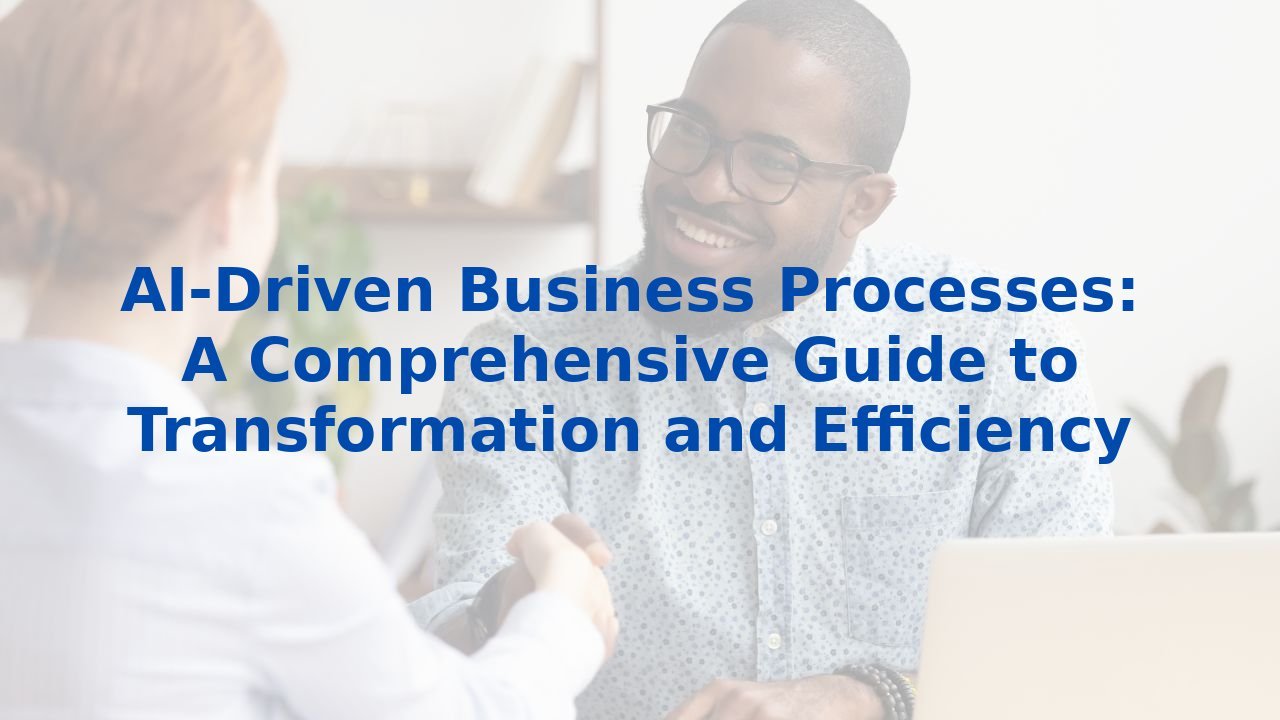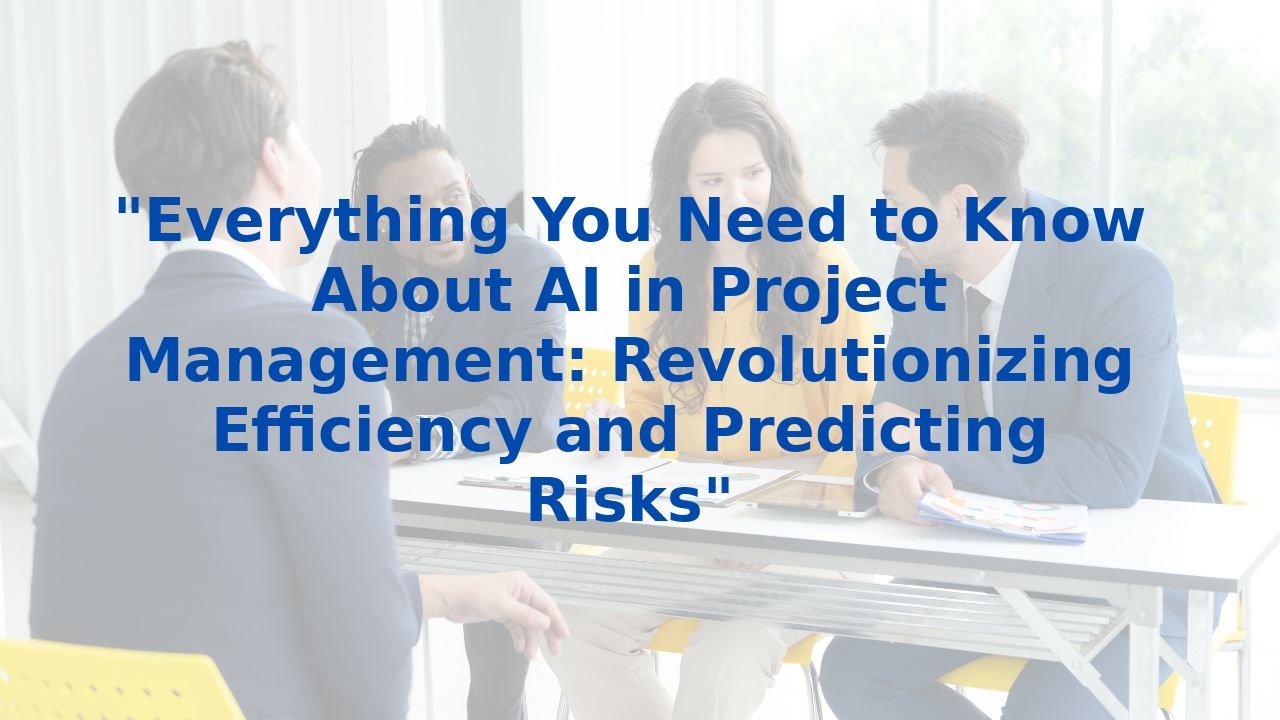AI-Driven Business Processes: A Comprehensive Guide to Transformation and Efficiency
AI-Driven Business Processes: A Comprehensive Guide to Transformation and Efficiency
Introduction
In an era where speed and innovation dictate success, organizations are turning to artificial intelligence (AI) as a vital ally in transforming business processes. From automating mundane tasks to fostering innovative solutions, AI has the potential to revolutionize the way businesses operate. This guide will explore the enhancement of key business processes through AI, focusing on process discovery, mapping, automation, and continuous improvement.
Process Discovery: Unveiling Hidden Efficiencies
Understanding the intricacies of operational workflows is essential. AI-driven process discovery offers a lens through which organizations can identify inefficiencies that traditional methods might overlook. By leveraging data science techniques like process mining and pattern recognition, AI swiftly analyzes vast datasets, uncovering hidden bottlenecks and redundancies.
The insights garnered through this analysis are invaluable. They not only highlight the existing operational models but also create a roadmap for implementing improvements. Think of it as shining a flashlight into dark corners—suddenly, every overlooked flaw becomes a strategic opportunity to refine operations.
Process Mapping: Creating a Blueprint for Success
Once inefficiencies are identified, the next step—process mapping—allows organizations to design actionable blueprints for improvement. AI excels here, visualizing workflows with precision and clarity. This not only aids in documenting processes but ensures alignment among stakeholders as everyone gains a comprehensive view of how tasks interconnect.
With customizable AI-generated process maps, organizations can tailor visualizations to meet their specific needs. However, the quality of these maps hinges on the reliability of the underlying data. Continuous efforts must be made to ensure that the information used is current, which in turn leads to effective process mapping.
Process Automation: The Workhorse of Efficiency
Among the most pronounced advantages of AI in business processes is automation. By employing Robotic Process Automation (RPA), AI can seamlessly execute repetitive, rule-based tasks. Whether it’s data entry or managing customer interactions, AI-driven automation can work tirelessly, delivering tasks with heightened accuracy over human performance.
Not only does this relieve employees from monotonous tasks, allowing them to focus on strategic initiatives, but it also amplifies organizational efficiency. The balance between AI and human involvement becomes crucial; businesses must integrate both forms of productivity to cultivate an environment where employees feel valued and engaged.
AI for Process Improvement: The Path Forward
Continuous improvement forms the core of an adaptable organization, and AI fosters this through ongoing analysis and feedback. By monitoring performance metrics and identifying areas for enhancement, organizations can continuously iterate their processes, drawing insights from AI to inform their strategies.
This proactive approach to process management helps to ensure that organizations remain competitive. AI not only informs current operations but also paves the way for innovative opportunities and potential business ventures, fostering a culture of improvement and agility within the workforce.
Benefits of AI in Business Process Management
- Improved Efficiency: By automating routine tasks, AI substantially reduces time spent on manual processes, leading to higher productivity.
- Enhanced Decision Making: AI empowers organizations with data-driven insights that support swift and confident decisions.
- Real-Time Monitoring: AI provides the capability for organizations to monitor processes in real-time, enabling prompt issue identification.
- Predictive Analytics: Utilizing historical data, AI predicts future outcomes, equipping businesses with foresight amidst dynamic market conditions.
- Streamlined Processes: AI helps visualize and optimize operational flows, creating more efficient pathways in everyday operations.
Training Employees for AI: The Key to Success
Despite AI’s vast capabilities, its power is amplified when employees are prepared to harness it. Training staff to effectively work with AI tools cultivates an environment of collaboration and innovation. Here are some compelling benefits:
- Improved Collaboration: Training facilitates synergy between human employees and AI systems, ensuring mutual strengths are utilized.
- Enhanced Problem-Solving Skills: Educating employees in AI encourages advanced analytical skills, empowering them to tackle complex challenges.
- Adaptability: Employees adept in AI technologies can swiftly adapt to evolving business environments, ensuring agility.
- Data-Driven Decision Making: Training enriches employees’ ability to interpret and leverage data insights, positioning them for strategic decision-making.
Conclusion
AI is not just a technological trend; it’s a transformative force that optimizes business processes, fosters efficiency, and drives innovation. By employing AI in process discovery, mapping, automation, and continuous improvement, organizations can set themselves on a path to sustained success. However, the real magic happens when teams are trained to work alongside these technologies, ensuring that human creativity and AI-driven efficiency work together in harmony.
For those looking to equip their workforce with AI skills and maximize the benefits AI offers, exploring comprehensive training opportunities can be a game-changer. Embrace AI, embrace growth.



